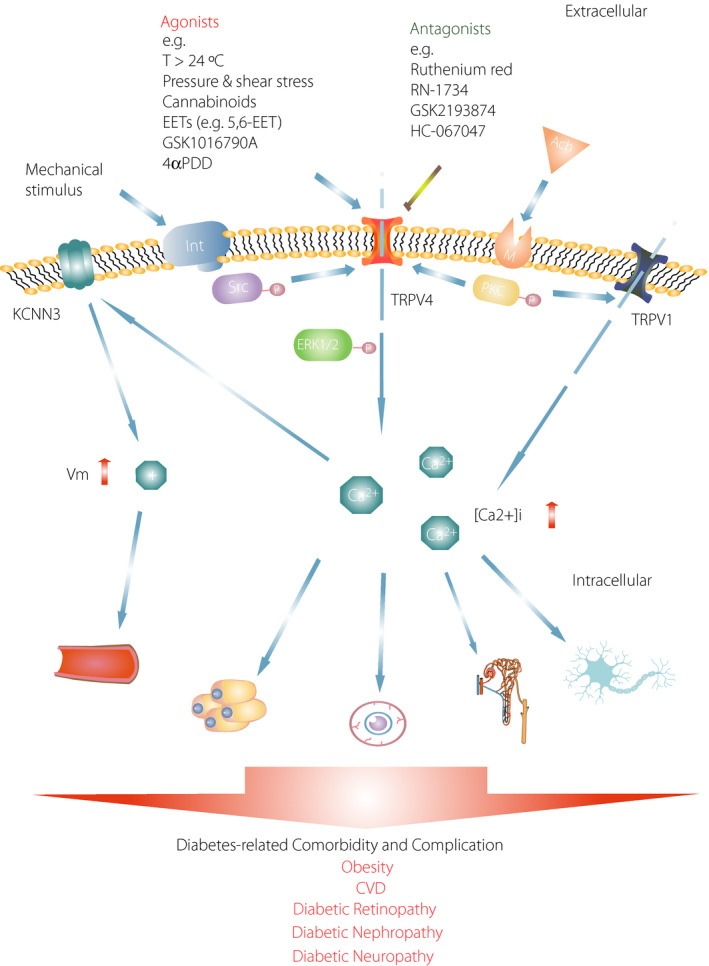Figure 2.

Diabetes leads to cellular damage mediated by transient receptor potential vanilloid 4 (TRPV4) activity. Pressure and shear stress activate TRPV4, which is a mechanosensitive channel. Integrin (Int) signaling is stimulated by the mechanical activation of TRPV4 through Src tyrosine kinase (Src). The stimulation of muscarinic (M) receptors by acetylcholine (ACh) also activates the colocalization of TRPV4 and TRPV1 through protein kinase C (PKC). TRPV4 and TRPV1 activation increase the intracellular Ca2+ concentrations ([Ca2+]i), which can result in damage to various cell types, such as artery cells, retinal microvascular endothelial cells, collecting duct cells, Müller cells and satellite glial cells. In addition, the activation of TRPV4 promotes extracellular signal‐regulated kinase 1/2 (ERK1/2) phosphorylation, and an elevated [Ca2+]i in adipocytes can lead to inflammation and insulin resistance. However, an increase in the [Ca2+]i can activate the KCNN3 channel, which can result in an increase in membrane potential and promote vasodilation. In diabetes, the dysfunction of TRPV4 can result in diabetes‐related diseases such as obesity, cardiovascular disease (CVD), diabetic retinopathy, nephropathy and neuropathy. KCNN3, potassium calcium‐activated channel subfamily N member 3; P, phosphorylation; Vm, membrane potential.
